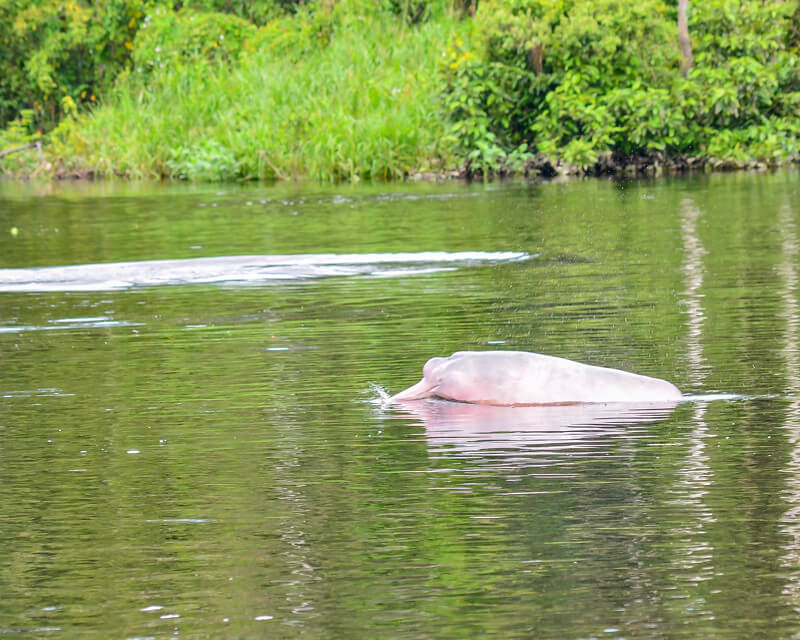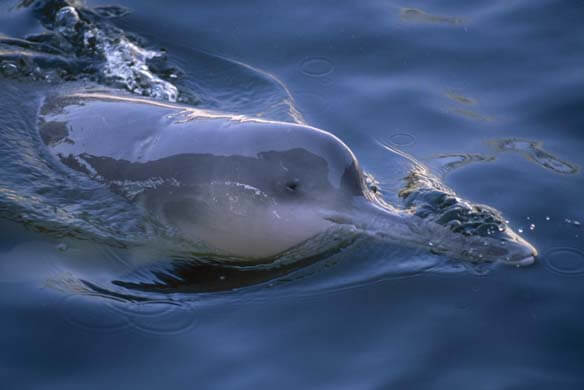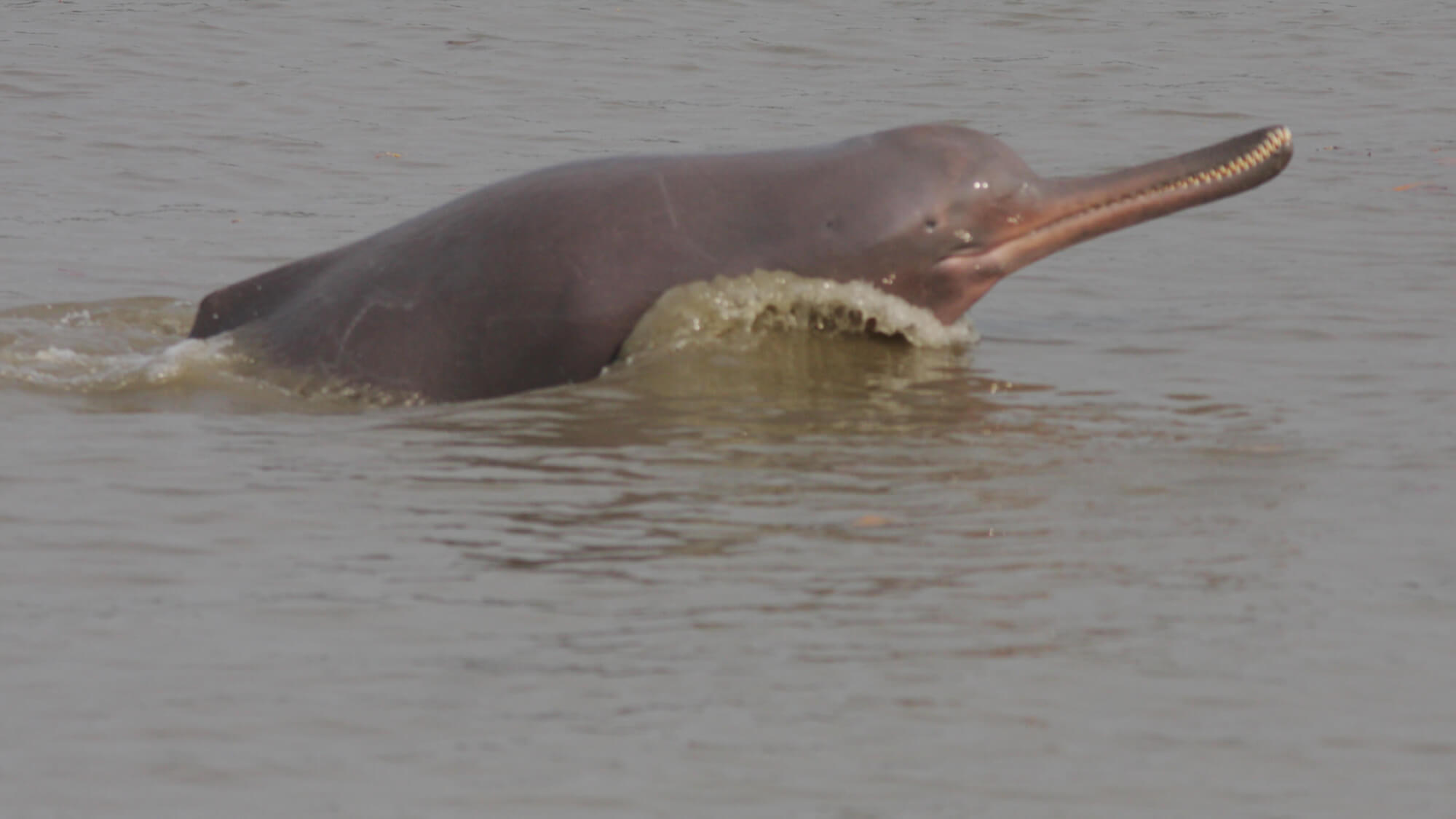There are nearly 70 species of toothed whales and 13 species of baleen whales. Baleen whales use a highly specialized feeding method, and the prey and the habitats that they seek are limited, but for toothed whales, the possibilities are endless. This variety translates into a large number of habitats. Some species of toothed whales, belonging to various families, frequent freshwater environments (rivers, lakes, etc.). To survive in these seemingly “inadequate” environments, these whales have several adaptations. Some have vibrissae (whiskers) to detect prey in the murky, muddy waters. They also produce a more diluted urine to maintain a stable level of internal salinity.
South America
The Amazon river dolphin (Inia geoffrensis) – boto in Brazilian Portuguese – the Bolivian river dolphin (Inia boliviensis) and the Araguaian river dolphin (Inia araguaiaensis) inhabit several South American rivers. They have a long, well toothed rostrum. Nearly blind, they use their echolocation systems to navigate and find prey. The Amazon river dolphin is the most abundant freshwater cetacean and shares its habitat with the tucuxi (Sotalia fluviatilis) in the Amazon and Orinoco Rivers. Unlike boto species, the tucuxi is not classified as a river dolphin, but as an oceanic dolphin. It frequents the river waters of Peru, Ecuador and Colombia as well as the coastal waters of South and Central America. The Franciscana (Pontoporia blainvillei), also called the La Plata dolphin, is found primarily in coastal waters and estuaries of southeastern South America (southern Brazil to northern Argentina).
Asia
The last confirmed sightings of Chinese river dolphin (Lipotes vexillifer), or baiji, go back to 2018. In 1997, its population was estimated at 13 individuals. According to the International Union for Conservation of Nature (IUCN), this endemic dolphin of the Yangtze River is in critical danger of extinction; some experts even suspect that it has already disappeared. A number of factors such as mortality due to illegal fishing practices (electrofishing), ship strikes, underwater blasting, habitat degradation, dam construction, declining prey populations and pollution are believed to have contributed to its extinction. This dolphin shares the waters of the Yangtze River with the Yangtze finless porpoise (Neophocaena asiaeorientalis asiaeorientalis). This species is also on the brink of extinction due to the high level of habitat degradation and the pressure from human activities that it faces.
In South Asia are found the South Asian river dolphin (Platanista gangetica) and the Indus river dolphin (Platanista gangetica minor). The eyes of these dolphins are as small as a pinhead. The Irrawaddy dolphin (Orcaella brevirostris) occasionally frequents freshwater rivers of Southeast Asia (Mekong, Irrawaddy, etc.), but is not a freshwater dolphin strictly speaking. Like the tucuxi, it belongs to the family Delphinidae. Physically, it recalls the beluga with its pale colour, melon-topped head and lack of a rostrum.
Rare and endangered species
Freshwater cetaceans are generally rare and unknown species, most of which are on the IUCN’s Red List of Threatened Species. So that they don’t follow the same fate as the Chinese river dolphin, which is probably extinct, initiatives are being undertaken around the world. In Bangladesh, for example, protection zones have been established by the government to protect the South Asian river dolphin and the Irrawaddy dolphin. Their habitats are degrading due to human activities and are threatened by climate change; they are also victims of hunting and bycatch in fishing nets.








